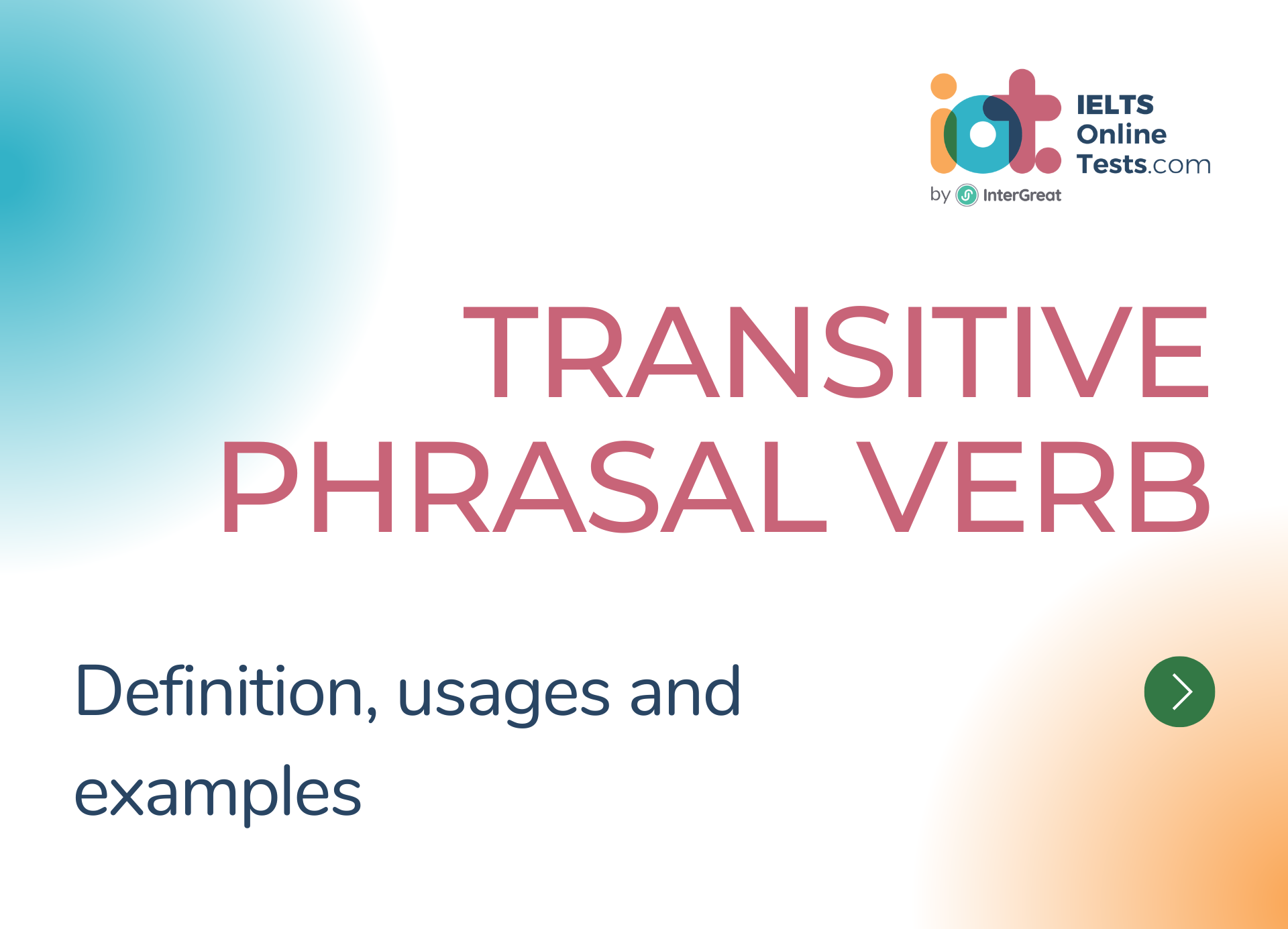
Transitive Phrasal Verb definition, usages and examples
A transitive phrasal verb is a combination of a verb and one or more particles (prepositions or adverbs) that requires an object to complete its meaning. In other words, it is a phrasal verb that must be followed by a noun or pronoun to make a grammatically correct sentence.
Here are some key points about transitive phrasal verbs:
Structure:
- A transitive phrasal verb consists of a verb and one or more particles.
- The particle can be a preposition or an adverb.
- The object usually comes after the particle, although in some cases, it can be placed between the verb and the particle.
Examples:
- "Put on" (verb + particle): She put on her coat.
- "Take off" (verb + particle): He took off his glasses.
- "Look after" (verb + particle): They looked after their neighbor's dog.
- "Bring up" (verb + particle): He brought up an interesting point during the meeting.
Object Placement:
- The object typically comes after the particle in transitive phrasal verbs.
- The object can be a noun or a pronoun.
- The object can also be a noun phrase, a gerund, or a pronoun with a prepositional phrase.
- Examples:
- "She put on her coat."
- "She put her coat on."
- "She put on a warm coat."
Meaning:
- Transitive phrasal verbs have a specific meaning that is often idiomatic or not directly deducible from the individual words.
- The addition of the particle can change or modify the meaning of the verb.
- Examples:
- "Put on" means to wear,
- "Take off" means to remove,
- "Look after" means to take care of, etc.
It is important to pay attention to the object placement and the specific meanings of transitive phrasal verbs. Understanding and correctly using transitive phrasal verbs will enhance your English language skills and enable you to communicate more effectively. Practice using them in sentences to become more comfortable with their usage.




